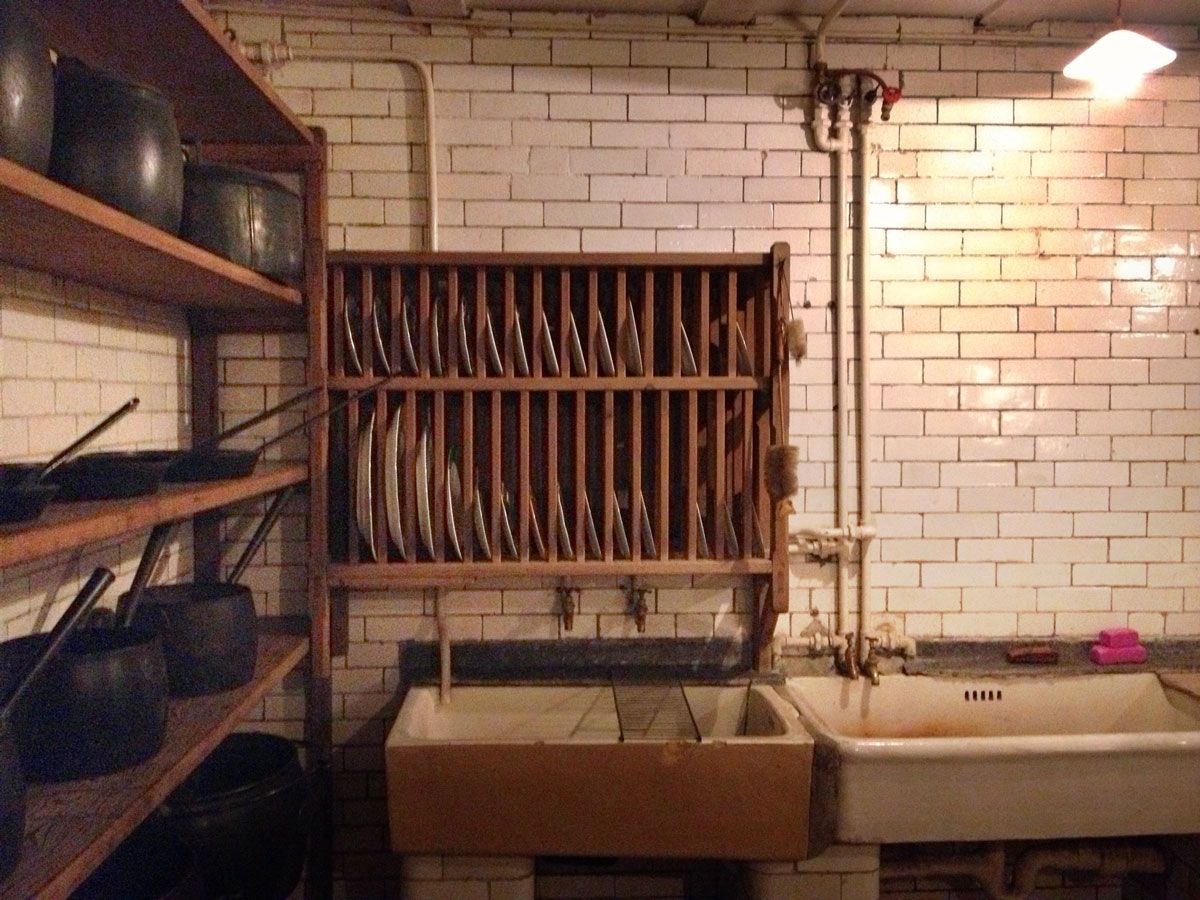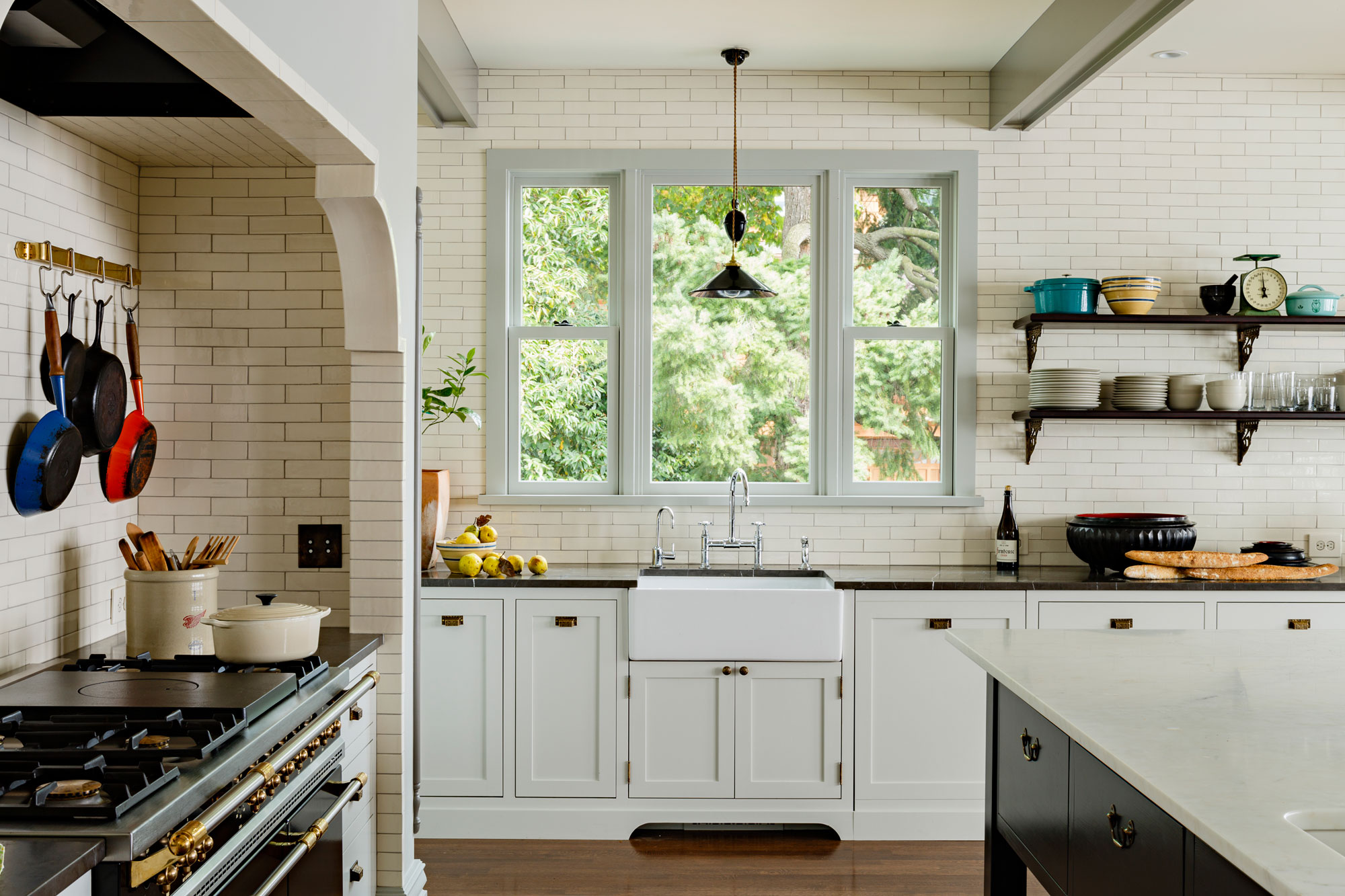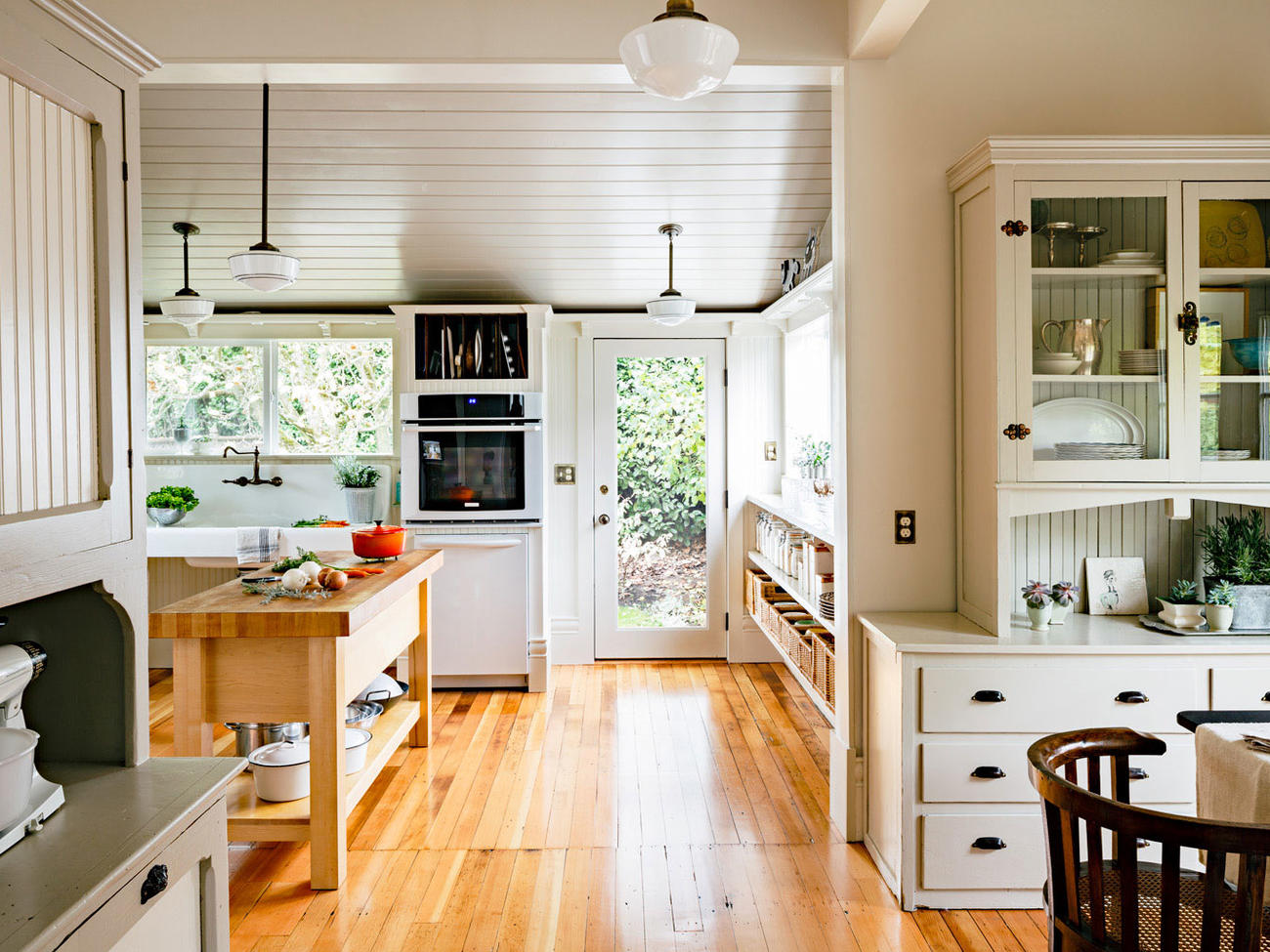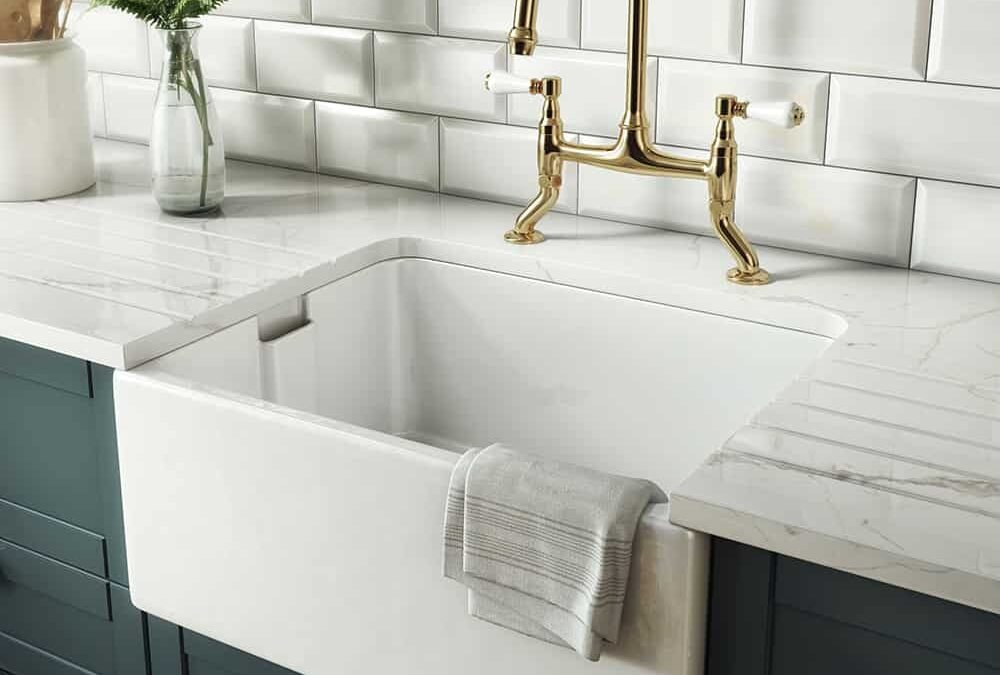Victorian Kitchen Sinks: A History
The Victorian era was a time of great change and innovation in the world of home design. From ornate architecture to intricate interior detailing, the Victorian style is still highly coveted today. But what about the practical elements of Victorian homes, like the kitchen sink? Did they even have them back then? Let's take a closer look at the history of Victorian kitchen sinks and how they evolved over time.
The Evolution of Kitchen Sinks
In the early Victorian era, kitchen sinks were not commonly found in homes. Most cooking and cleaning was done outside in separate buildings, leaving little need for a sink inside the house. However, as the century progressed and indoor plumbing became more widespread, kitchen sinks became a mainstay in Victorian homes.
The Role of the Butler's Pantry
In larger Victorian homes, the kitchen was often separated from the main living area by a butler's pantry. This space acted as a buffer between the kitchen and the dining room, and typically contained a sink for washing dishes and preparing food. These sinks were often made of cast iron and had a porcelain enamel coating for durability.
The Rise of the Belfast Sink
As the Victorian era progressed, the popularity of the Belfast sink grew. This type of sink, also known as a butler sink, was deeper and wider than traditional sinks and had a built-in drainboard. It was made of fireclay, a type of ceramic material, and was often found in the scullery or washroom of a Victorian home.
The Introduction of Hot and Cold Water Faucets
Before the Victorian era, most homes only had a single cold water faucet in the kitchen sink. But with the rise of indoor plumbing, hot water faucets were introduced, making it easier to wash dishes and clean up after meals. Victorian kitchen sinks often featured separate hot and cold water taps, with the hot water being heated by a separate boiler or water heater.
The Advent of the Farmhouse Sink
In the later part of the Victorian era, the farmhouse sink began to gain popularity. This type of sink was larger and deeper than previous models, making it ideal for washing large pots and pans. It was also designed to sit on top of the kitchen counter rather than being recessed into it, giving it a more modern and stylish look.
The Influence of Industrialization
The Industrial Revolution had a major impact on the design and production of Victorian kitchen sinks. With the introduction of new manufacturing techniques and materials, sinks became more affordable and accessible to the middle class. This led to a wider variety of styles and designs to choose from, including stone, marble, and copper sinks.
The Legacy of Victorian Kitchen Sinks
Today, Victorian kitchen sinks are still sought after by homeowners looking to add a touch of old-world charm to their kitchens. Many modern sinks are designed to mimic the look and feel of traditional Victorian sinks, while incorporating modern features and materials. Whether you prefer a classic white porcelain sink or a more unique hammered copper design, there are plenty of options to choose from.
In Conclusion
From simple cast iron sinks to elaborate farmhouse models, Victorian kitchen sinks have certainly come a long way. While they may have been a practical necessity in the past, they have now become a statement piece in many homes. Whether you own a Victorian home or simply appreciate the timeless beauty of this era, a Victorian kitchen sink may just be the perfect addition to your kitchen.
The Evolution of Kitchen Sinks in Victorian Homes

The Kitchen Sink: A Staple in Modern Homes
 When we think of a kitchen, the first thing that comes to mind is usually the sink. This essential fixture is used for a variety of tasks, from washing dishes to preparing food. But have you ever wondered when kitchen sinks became a standard feature in homes? The answer lies in Victorian homes, where the design and function of the kitchen sink first began to take shape.
Victorian Houses and Their Unique Characteristics
Victorian homes, which were built during the reign of Queen Victoria from 1837 to 1901, were known for their elaborate and ornate designs. These houses were built to impress, with intricate details and grand facades. In terms of interior design, the kitchen was often considered a utilitarian space and was not given much attention. However, this began to change as the Industrial Revolution brought about new technologies and innovations.
When we think of a kitchen, the first thing that comes to mind is usually the sink. This essential fixture is used for a variety of tasks, from washing dishes to preparing food. But have you ever wondered when kitchen sinks became a standard feature in homes? The answer lies in Victorian homes, where the design and function of the kitchen sink first began to take shape.
Victorian Houses and Their Unique Characteristics
Victorian homes, which were built during the reign of Queen Victoria from 1837 to 1901, were known for their elaborate and ornate designs. These houses were built to impress, with intricate details and grand facades. In terms of interior design, the kitchen was often considered a utilitarian space and was not given much attention. However, this began to change as the Industrial Revolution brought about new technologies and innovations.
The Rise of the Victorian Kitchen Sink
 Prior to the Victorian era, kitchens in most homes did not have a sink. Dishes were washed outside or in a separate room, and food preparation was done on a table or countertop. But with the introduction of indoor plumbing, the kitchen sink became a necessary addition to the home. However, the first kitchen sinks were not the modern, stainless steel ones we are familiar with today.
The Evolution of Kitchen Sink Materials
At the beginning of the Victorian era, kitchen sinks were made of cast iron or stone, and were often double-bowled for washing and rinsing dishes. However, these materials were heavy and prone to rust and staining. As technology advanced, so did the materials used for kitchen sinks. Porcelain and enamel sinks became popular, as they were easier to clean and maintain. In the late 1800s, nickel-plated copper sinks were introduced, adding a touch of luxury to Victorian kitchens.
Prior to the Victorian era, kitchens in most homes did not have a sink. Dishes were washed outside or in a separate room, and food preparation was done on a table or countertop. But with the introduction of indoor plumbing, the kitchen sink became a necessary addition to the home. However, the first kitchen sinks were not the modern, stainless steel ones we are familiar with today.
The Evolution of Kitchen Sink Materials
At the beginning of the Victorian era, kitchen sinks were made of cast iron or stone, and were often double-bowled for washing and rinsing dishes. However, these materials were heavy and prone to rust and staining. As technology advanced, so did the materials used for kitchen sinks. Porcelain and enamel sinks became popular, as they were easier to clean and maintain. In the late 1800s, nickel-plated copper sinks were introduced, adding a touch of luxury to Victorian kitchens.
The Kitchen Sink as a Status Symbol
 As the Victorian era progressed, the kitchen sink evolved from a simple utilitarian feature to a status symbol. The wealthy would often have elaborate sinks with multiple compartments, decorative designs, and intricate faucets. These sinks were not just for washing dishes, but were also used for displaying fine china and silverware, showcasing the wealth and social status of the homeowner.
Did Any Victorian Homes Have Kitchen Sinks?
In conclusion, while the kitchen sink may seem like a basic element in modern homes, its evolution can be traced back to the Victorian era. These grand and opulent homes played a significant role in shaping the design and function of the kitchen sink we know today. So to answer the question – yes, Victorian homes did have kitchen sinks, and they were a sign of luxury and sophistication.
As the Victorian era progressed, the kitchen sink evolved from a simple utilitarian feature to a status symbol. The wealthy would often have elaborate sinks with multiple compartments, decorative designs, and intricate faucets. These sinks were not just for washing dishes, but were also used for displaying fine china and silverware, showcasing the wealth and social status of the homeowner.
Did Any Victorian Homes Have Kitchen Sinks?
In conclusion, while the kitchen sink may seem like a basic element in modern homes, its evolution can be traced back to the Victorian era. These grand and opulent homes played a significant role in shaping the design and function of the kitchen sink we know today. So to answer the question – yes, Victorian homes did have kitchen sinks, and they were a sign of luxury and sophistication.




















